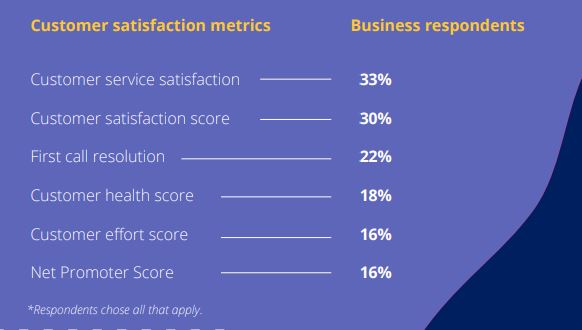77% of Customers Bounce if They Receive Poor Service
Businesses are making progress by adding more digital service channels to keep up with customer demands; however, this progress often comes at the expense of service quality by creating more inconsistencies and increasing customer frustration, according to new research by Pegasystems Inc., the digital process automation company. Over the course of 2020 and into 2021, the […]
Topics

Businesses are making progress by adding more digital service channels to keep up with customer demands; however, this progress often comes at the expense of service quality by creating more inconsistencies and increasing customer frustration, according to new research by Pegasystems Inc., the digital process automation company.
Over the course of 2020 and into 2021, the shape of customer service has fundamentally changed – and there is likely no going back. Customers are thinking differently about how they obtain and satisfy their service needs. And at the same time, businesses are devising new strategies for how to connect with and serve their customers. The pandemic has acted as a catalyst for these shifts. But the implications on customer perceptions and behaviour, as well as overall customer service strategy across businesses, will be lasting.
The global study was conducted by research firm Savanta and surveyed 12,700 business leaders, agents, and customers to understand how the pandemic is impacting the current and future states of customer service.
For many businesses, the pandemic created extraordinary challenges that exacerbated longstanding customer frustrations, such as having to repeat the same information to multiple agents and being passed to different departments to resolve a single issue. But their most consequential reaction is often expressed through their wallets: 77 per cent of customers said they would take their business elsewhere if they received poor service. The pressure is on executives to address these service issues before they do any further damage to their businesses, many of which are still in pandemic recovery mode.

What customers said;
- 27 per cent of consumers said that they felt like their entire day had been ruined by bad service
- 55 per cent share that they normally have to contact a business more than once to resolve their issue
- 51 per cent of customers would also like to pick up the conversation where they left off, even if they switch channels
What marketers said;
- 28 per cent of leaders share that their employees need to prompt customers for information they already supplied on another channel and that agents must enter the same information manually in different places
- 80 per cent of business respondents even admit that the quality of service they provide differs based on the channel
- 50 per cent now consider the ability to seamlessly continue the same conversation as one of the most important aspects of customer service
Top five challenges for customer service departments
- Customers must repeat themselves
- Lack of visibility/process
- Inconsistent service quality
- No proactive communication
- Too long to resolve
Also Read: 63% CX Professionals Say Agents Lack Skills to Maximise AI
Top five frustrations for customer service agents;
- Prompting customers for information they’ve already supplied on another channel
- Manually entering the same information in different places
- Passing customers between teams/departments
- Lack of historical context on the customer’s past interactions
- Lack of information about self-service on the website
The survey identified three areas that will be a priority as organisations continue to strive for optimal customer service:

- Service needs to offer final resolution on all channels: The main issue with service today is the lack of consistency; 67 per cent of customers think businesses need to improve service quality on non-traditional channels, such as web, mobile app, and chatbot/intelligent virtual assistant. This lack of consistency results in customers repeating information across channels (the top frustration amongst surveyed customers and agents) and resorting to less desirable channels, such as the phone, to achieve final resolution – half of customers cited a phone call as the only way to solve an issue. If they’ve tried and failed with other channels, by the time customers resort to the phone, they are often frustrated, angry, or both. Organisations need to equip all service channels to be equally effective, saving customers and agents time and improving their experiences.
- Self-service is gaining in popularity, but mainstream approaches fall short: The desire for self-service is stronger than ever – 45 per cent of customers surveyed are more likely to use self-service today than before the pandemic. And while 82 per cent of consumers are willing to use self-service, almost half (46 per cent) still don’t expect it to work. With 75 per cent of customers wanting businesses to improve self-service and 56 per cent visiting a business’ website before calling, there is a massive opportunity for business leaders to improve self-service capabilities. And as customer bases grow to include younger, digital-native generations, organisations must meet new service preferences and expectations to maintain loyalty and draw new customers in.
- AI and automation are crucial to achieving high levels of service: Once life begins to return to normal, customers will still expect the same – if not better – levels of service, which require the right infrastructure and tools. Eighty–five percent of businesses expect to invest in AI technology in the next few years, while 57 per cent will increase investments in self-service and automated customer service technology within the next two years. Additionally, 53 per cent of business leaders plan to use technology to proactively monitor customer data to predict problems before they arise, and almost two-thirds of customers agree companies should provide this service. These investments will help enhance both agent-assisted and non-agent-assisted channels for faster resolution – sometimes even before a problem arises.
Also Read: Strategies to Improve Data Quality in Enterprises
The impact of the pandemic has long-lasting implications for customer service, both today and in the future. As businesses adjust, having the right solutions in place will help provide the level of service customers have come to expect.
When PEGA asked leaders about the potential benefits they would see from AI, they found that some aspects of service that are most important to customers – faster responses, improved efficiency, and higher accuracy –at the top. Since reducing costs is also a perennial concern for those in charge of contact centre operations, the potential for AI to help in this area is significant.





